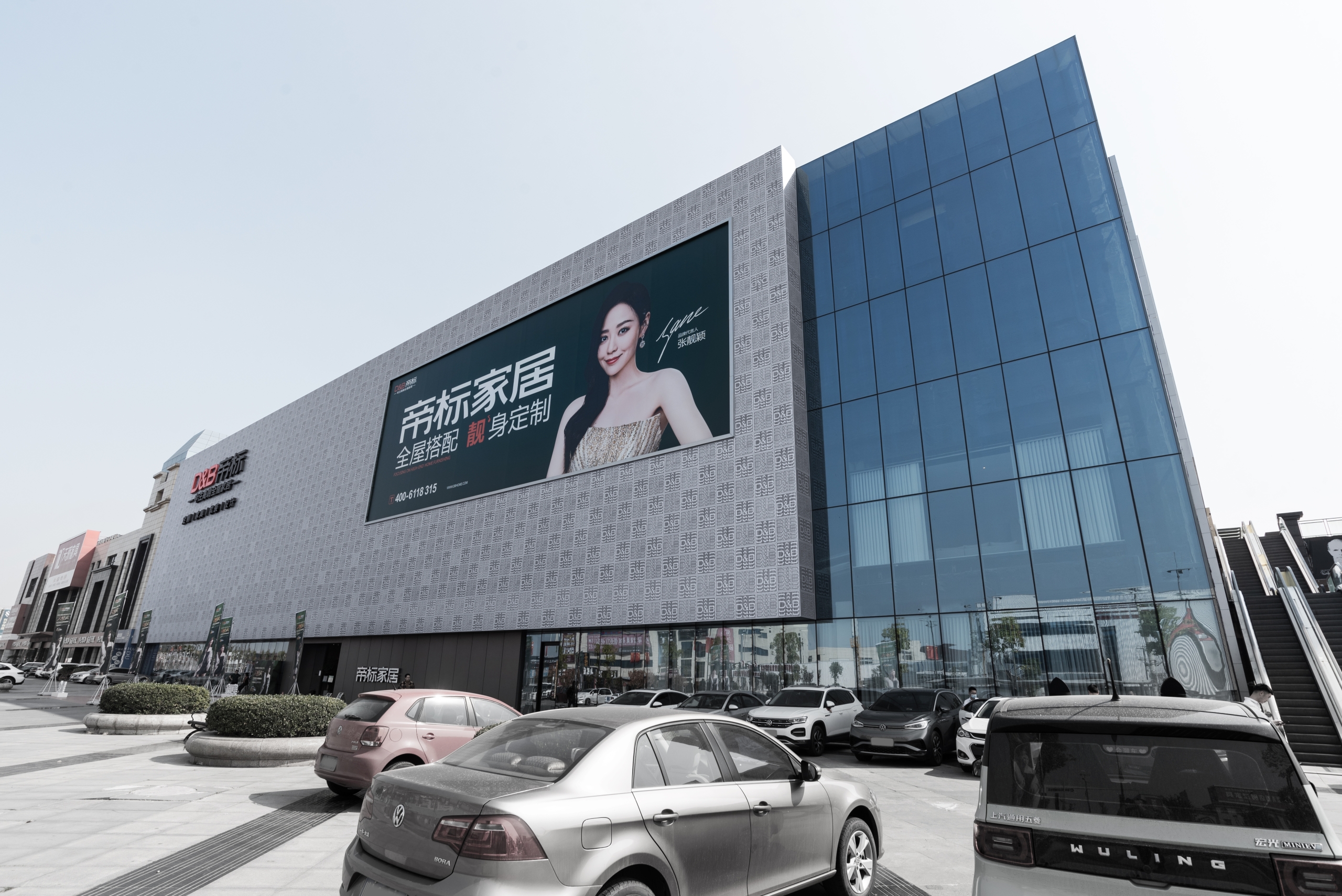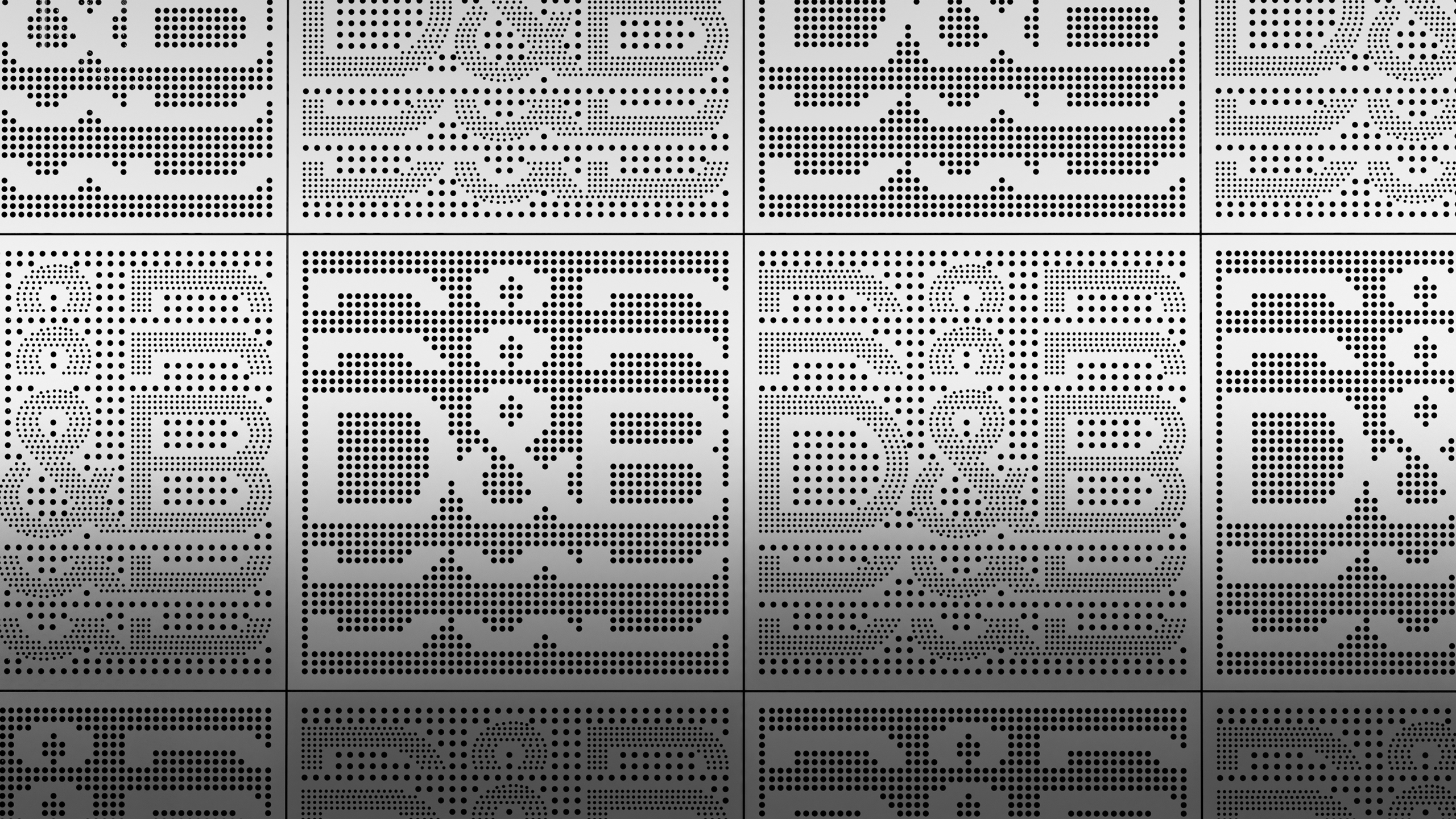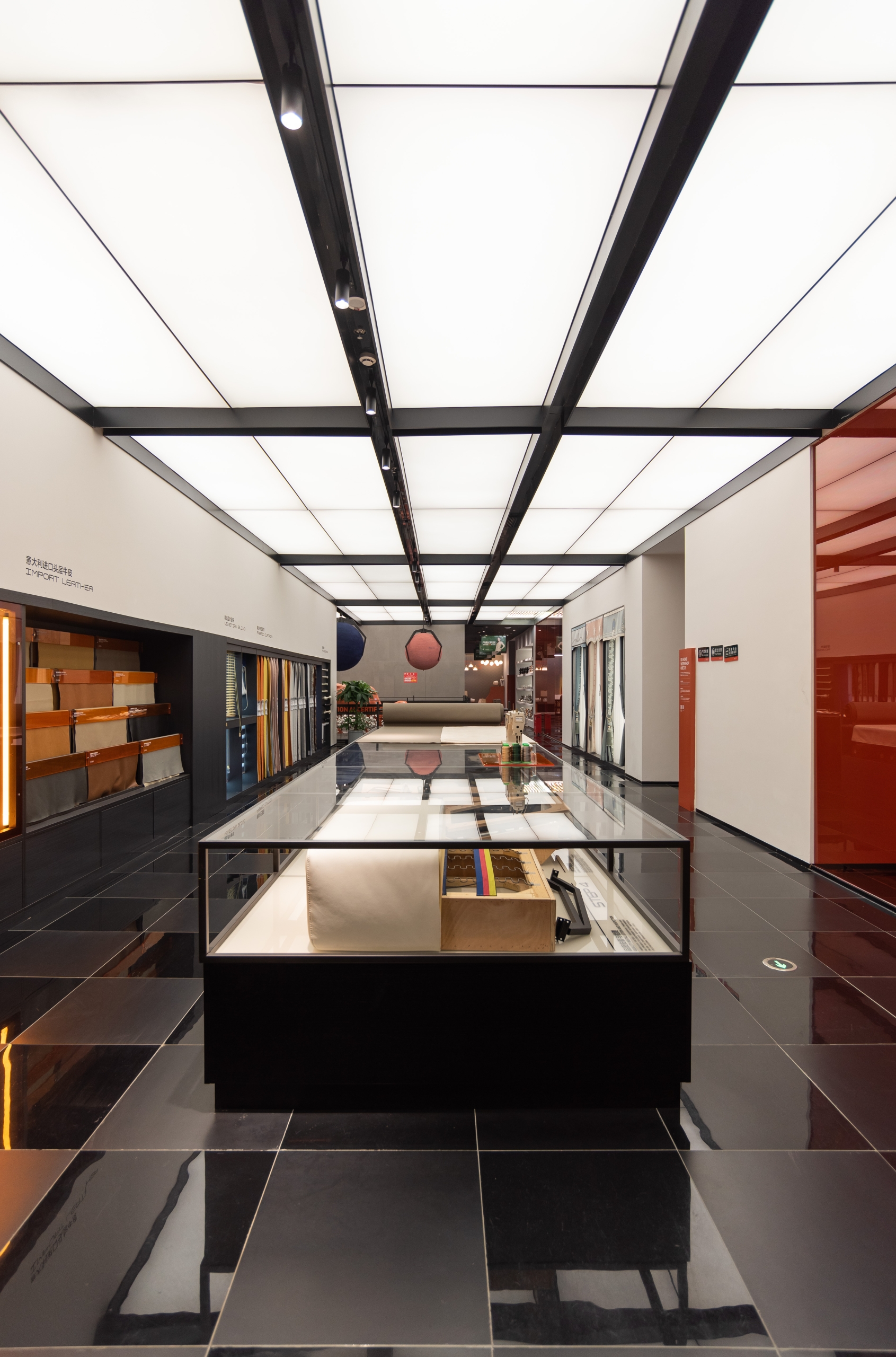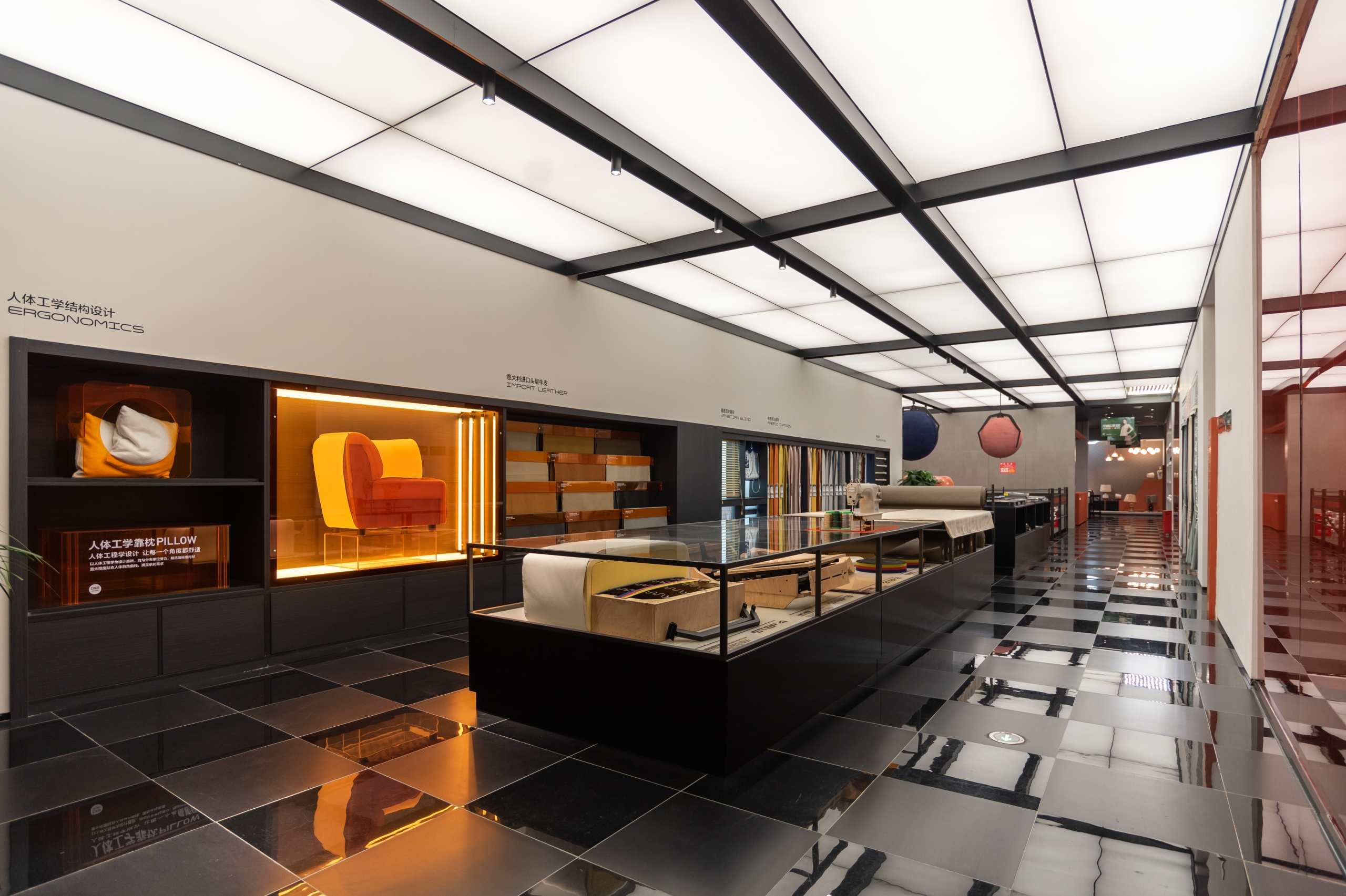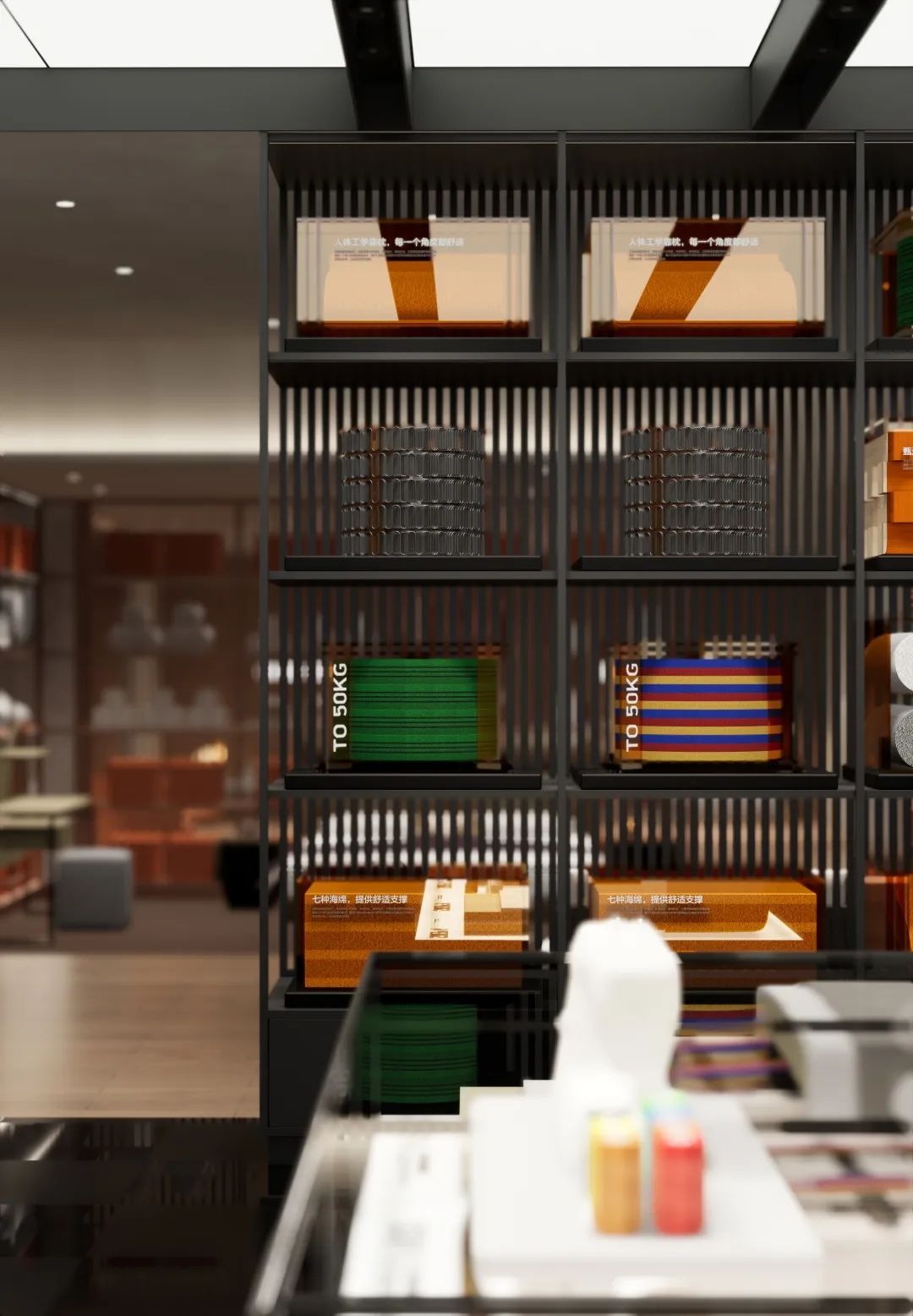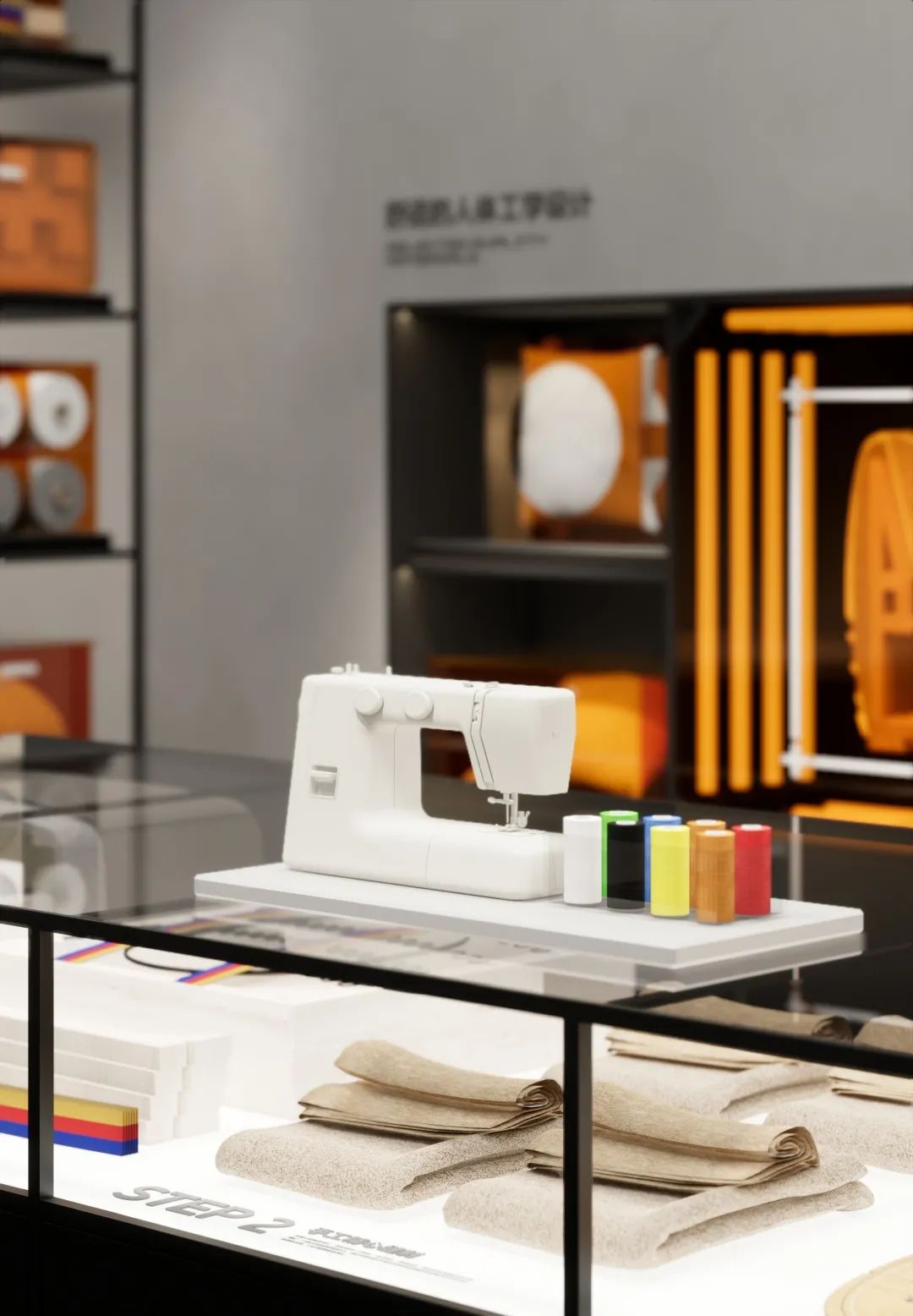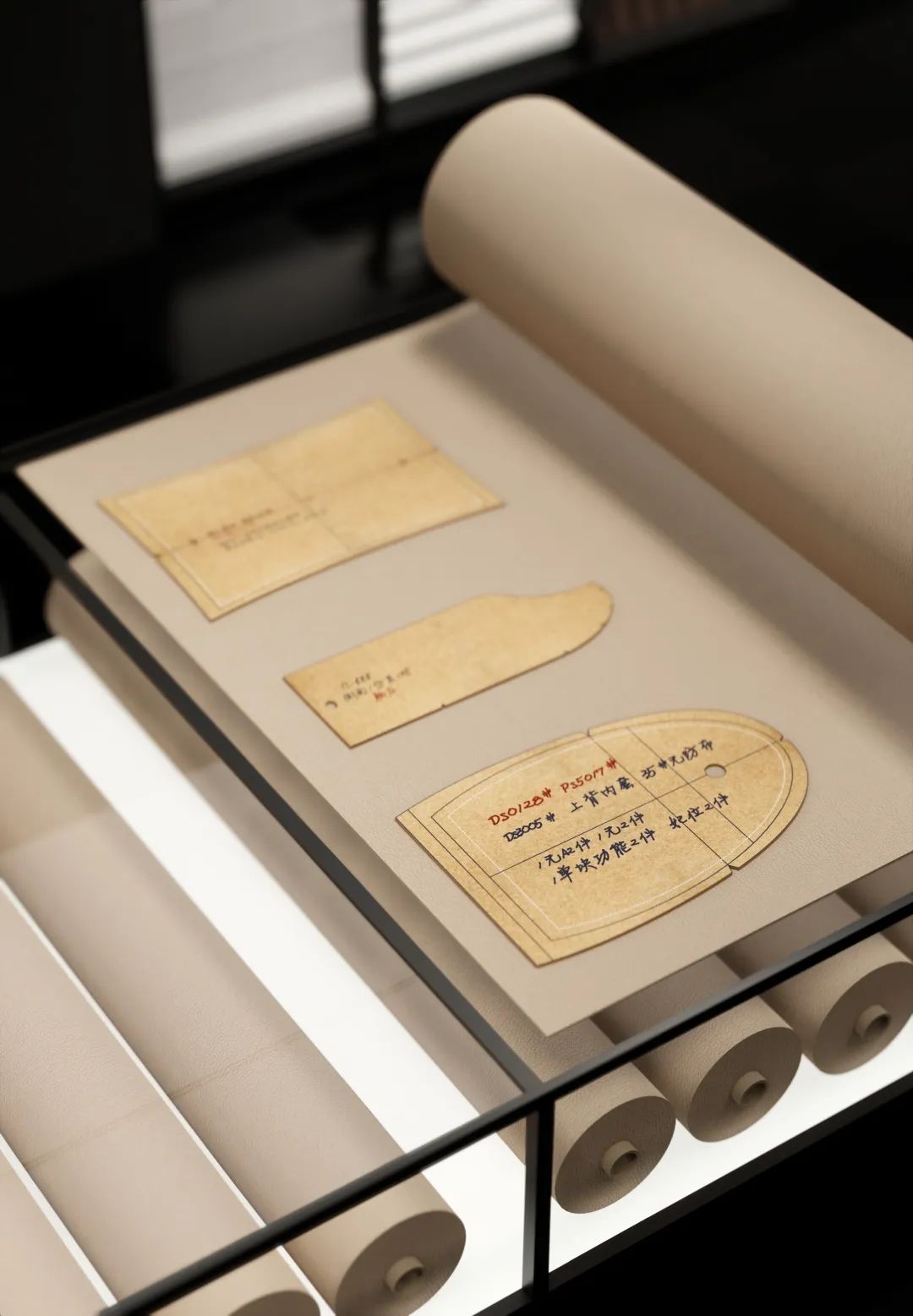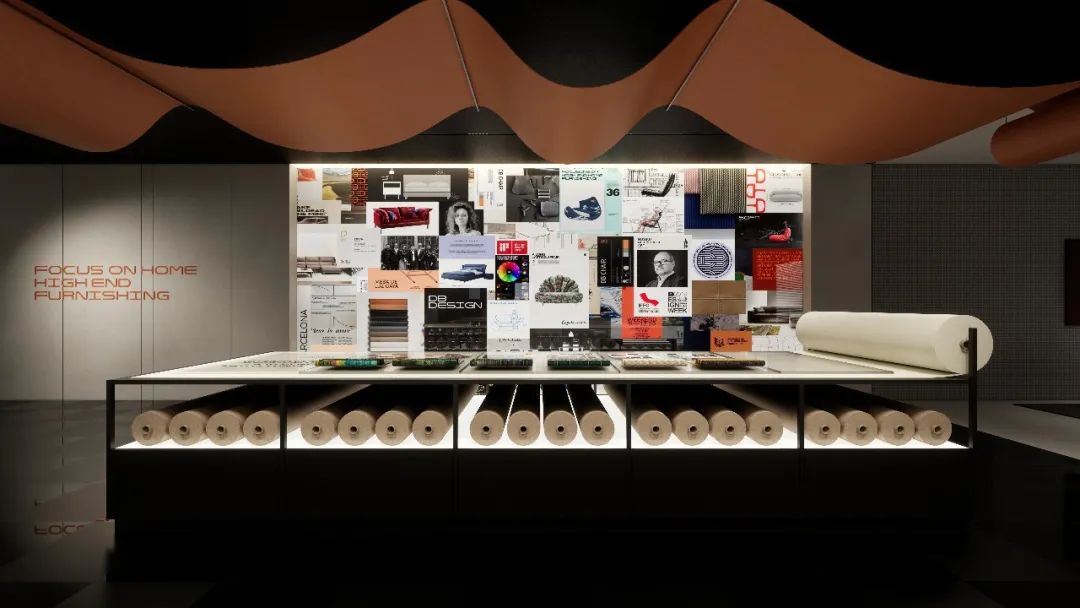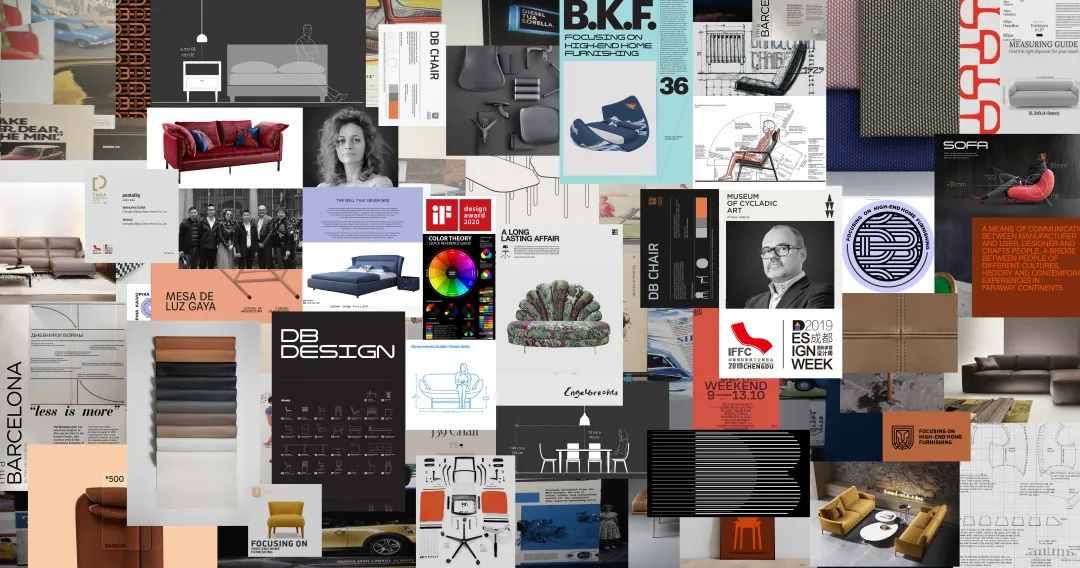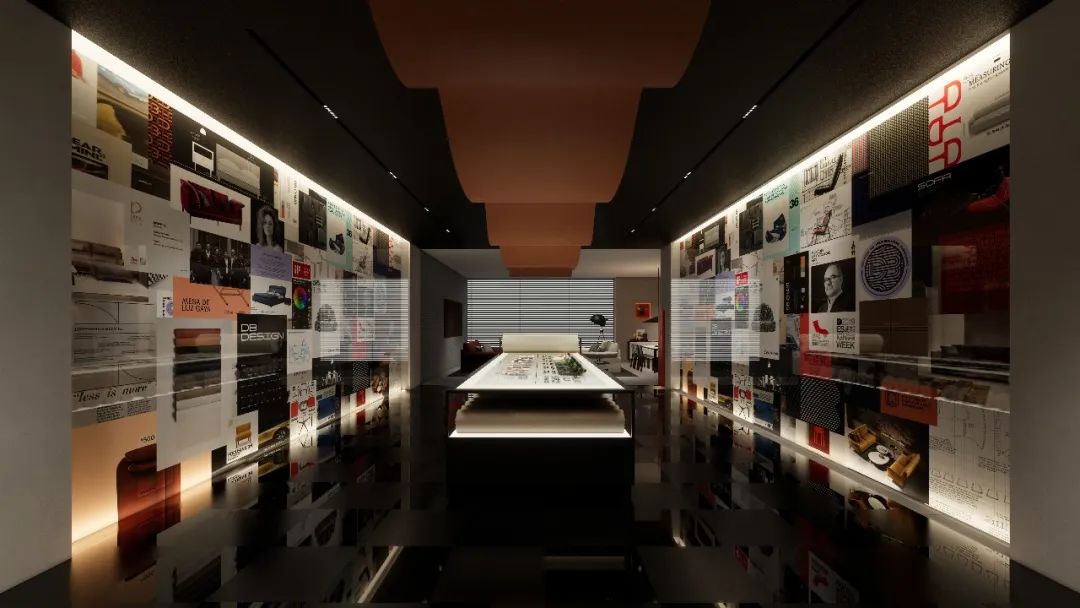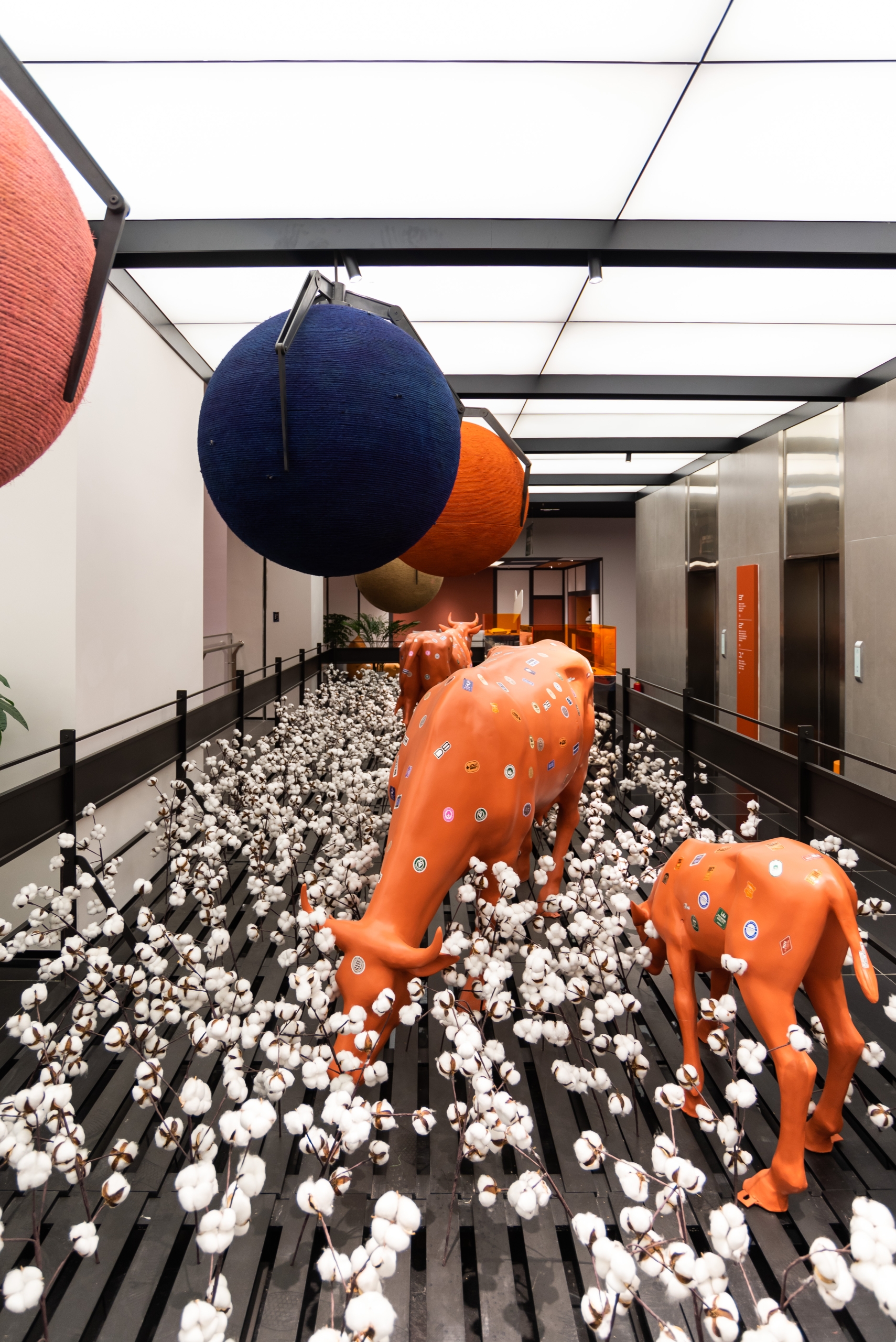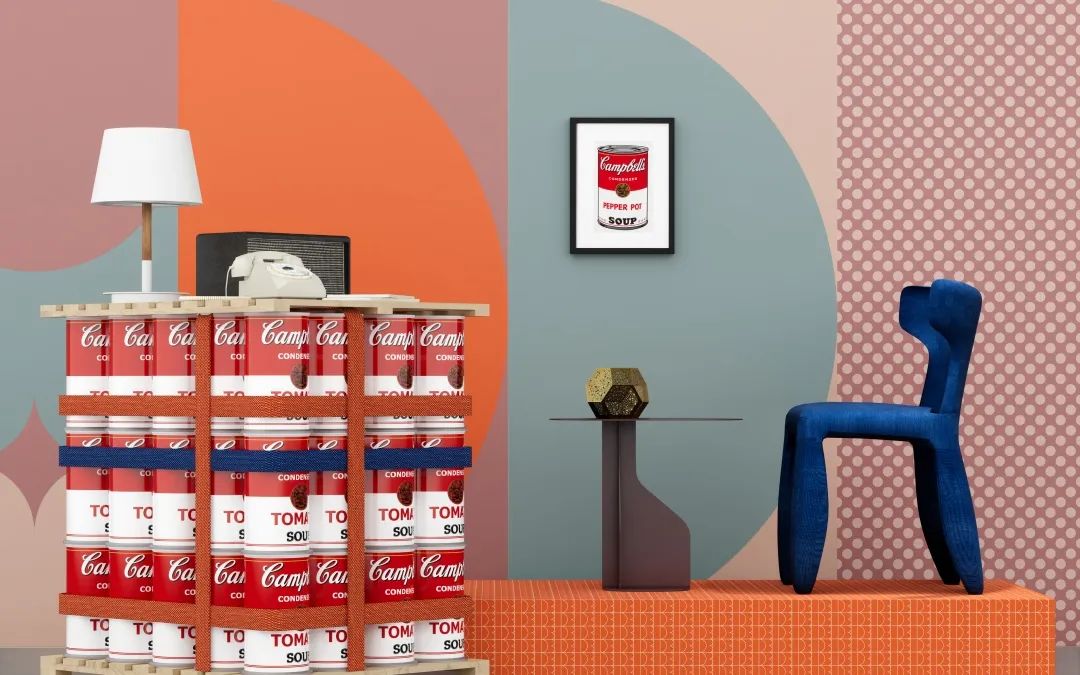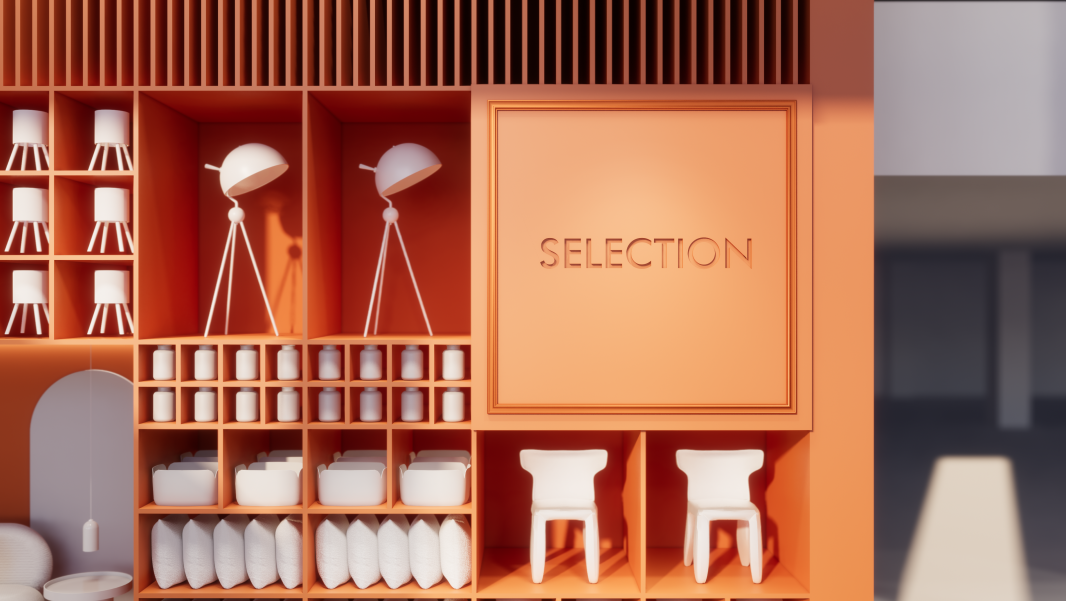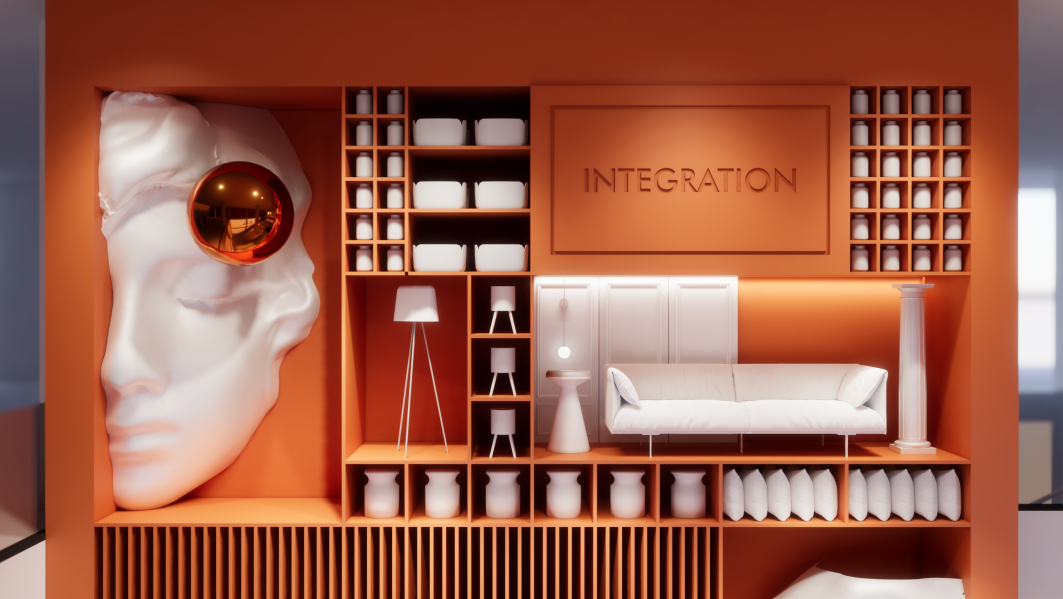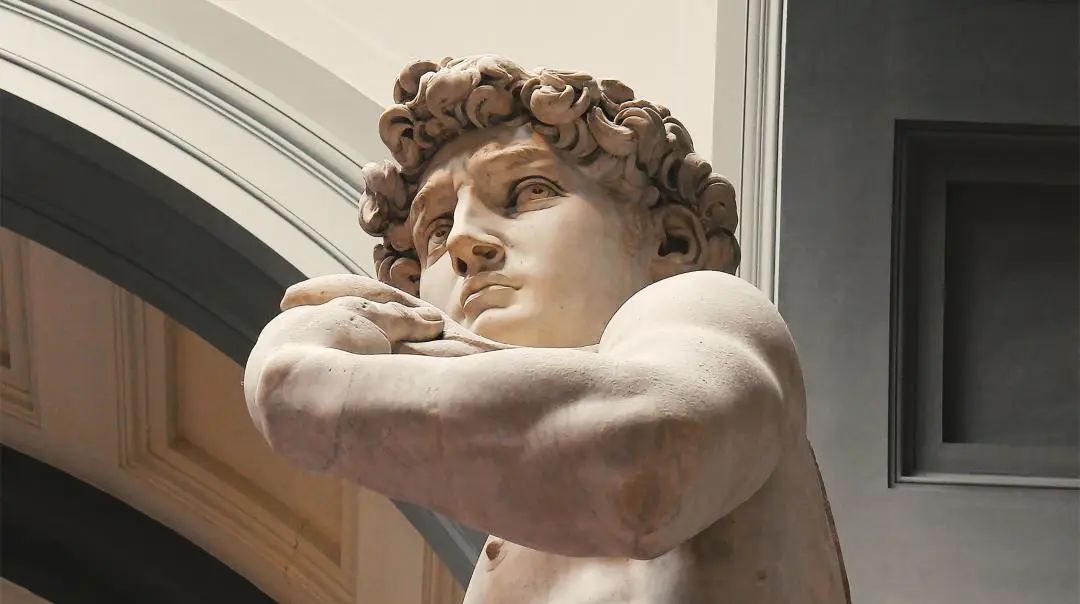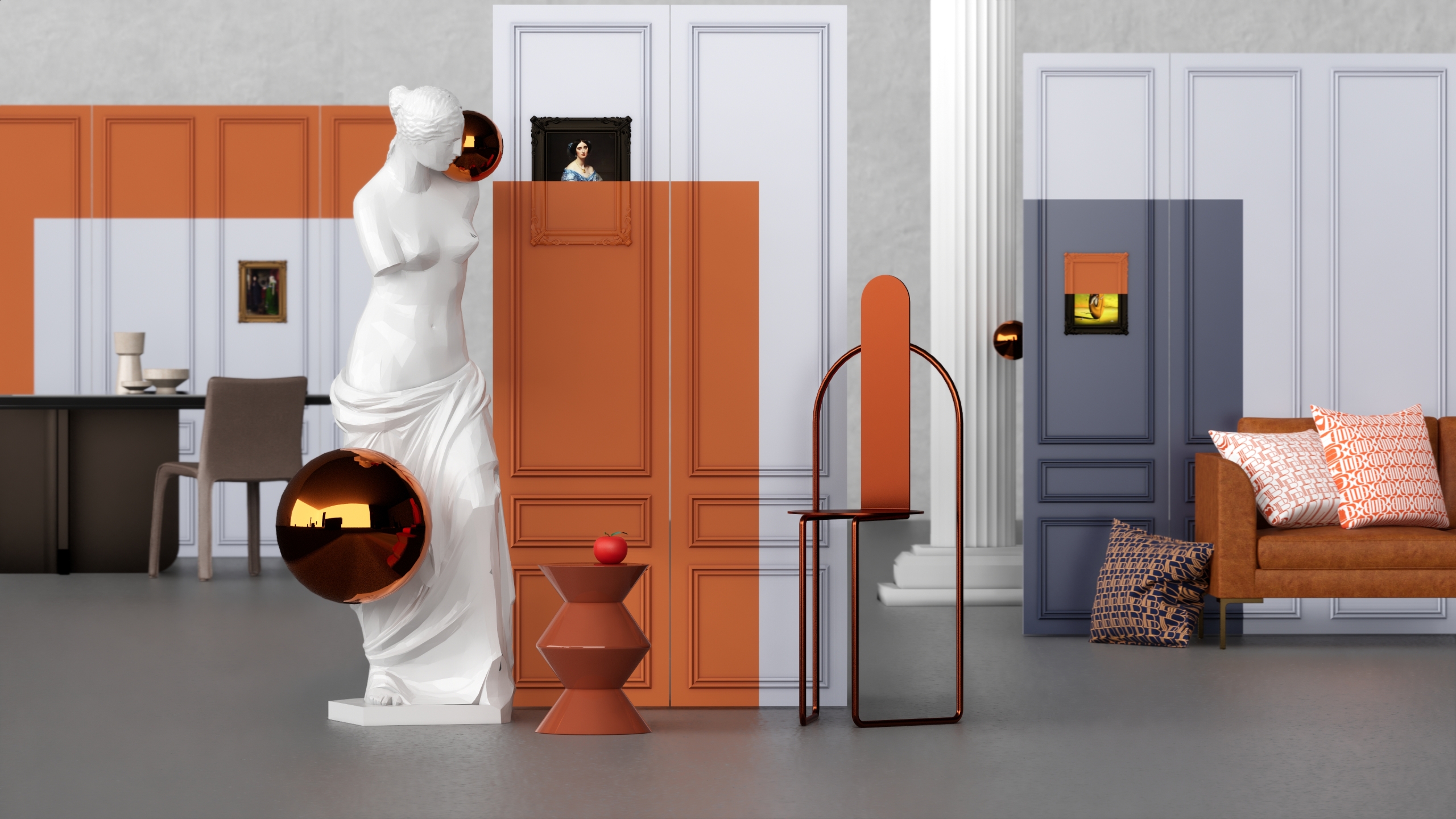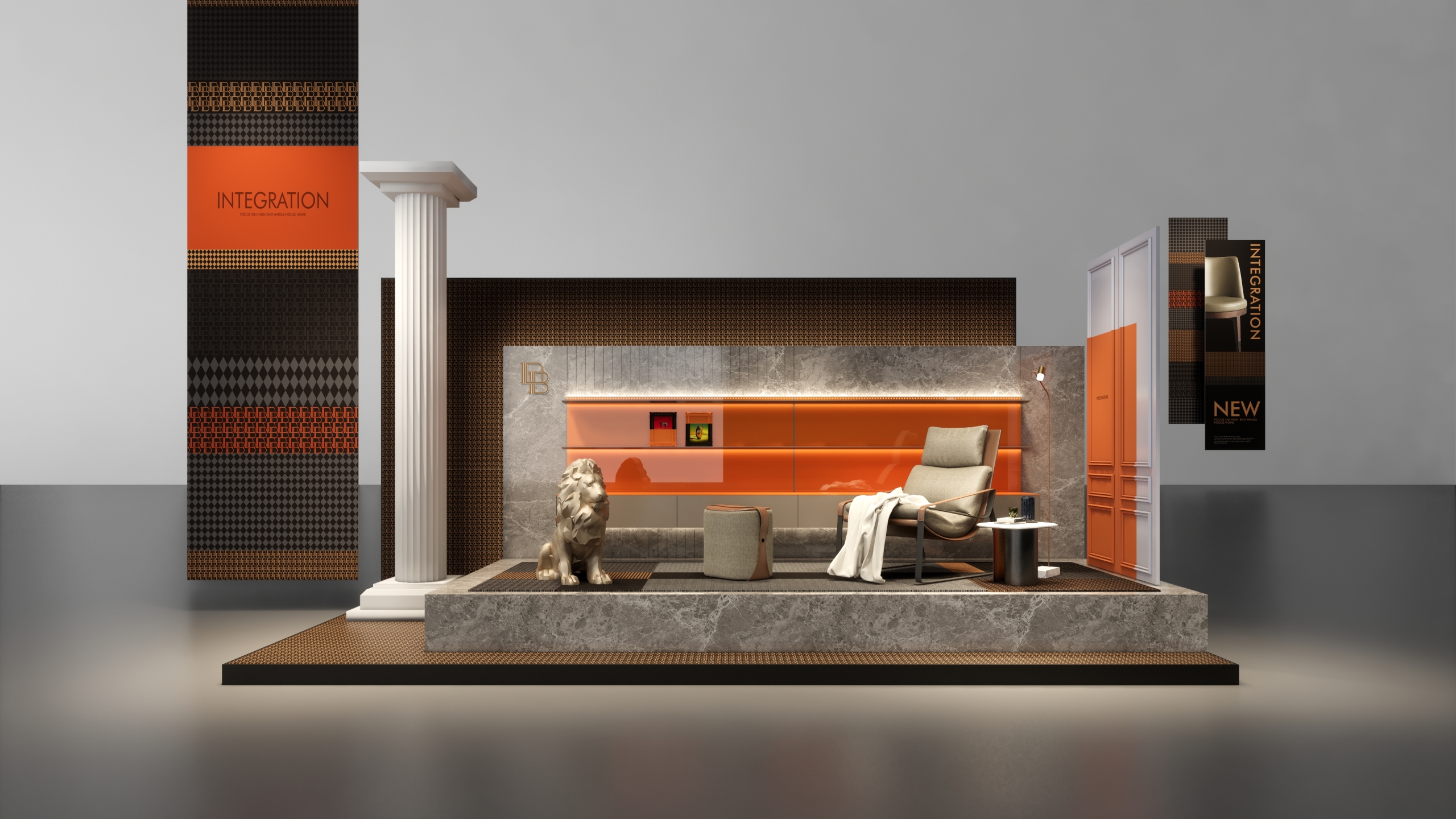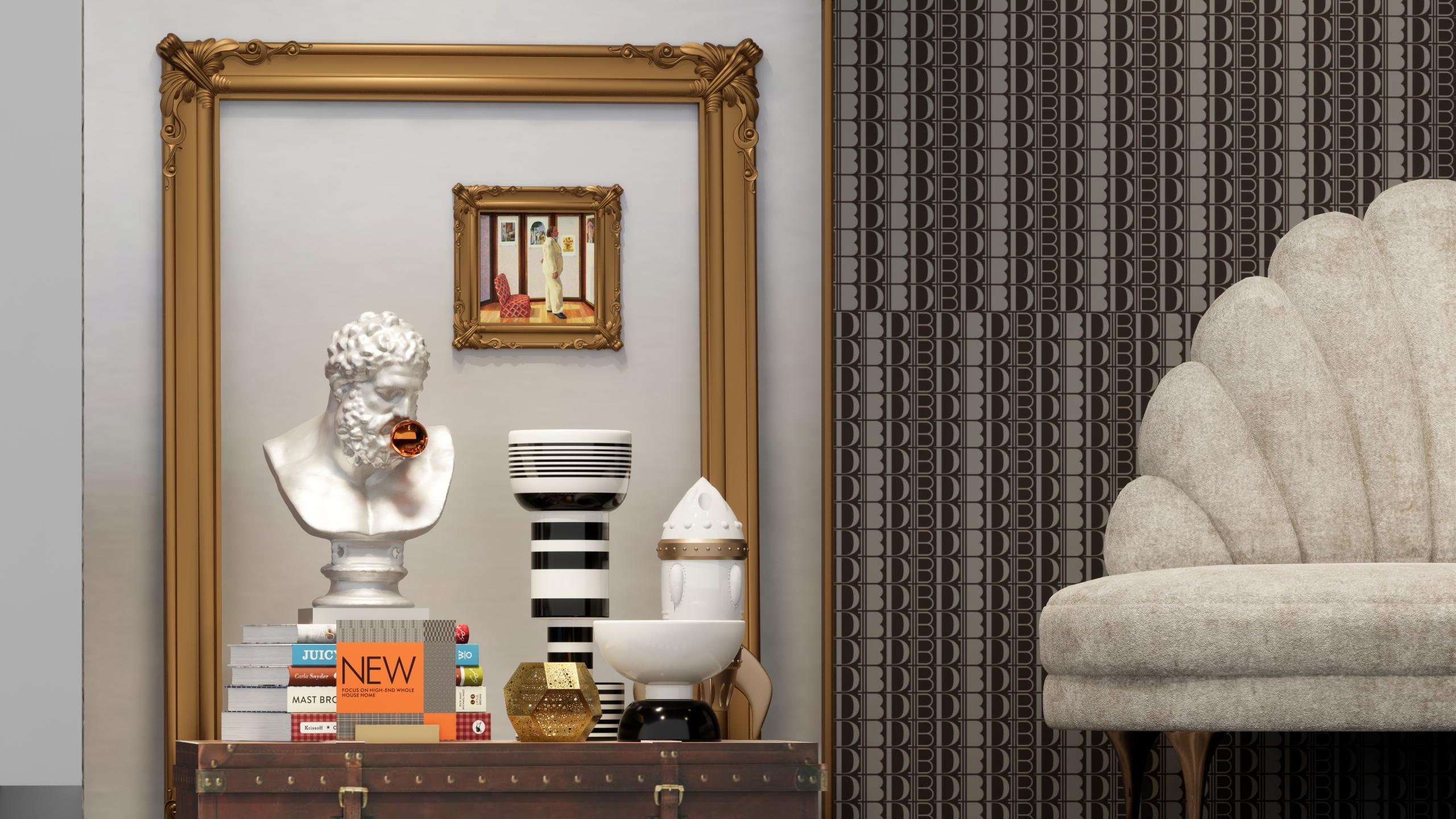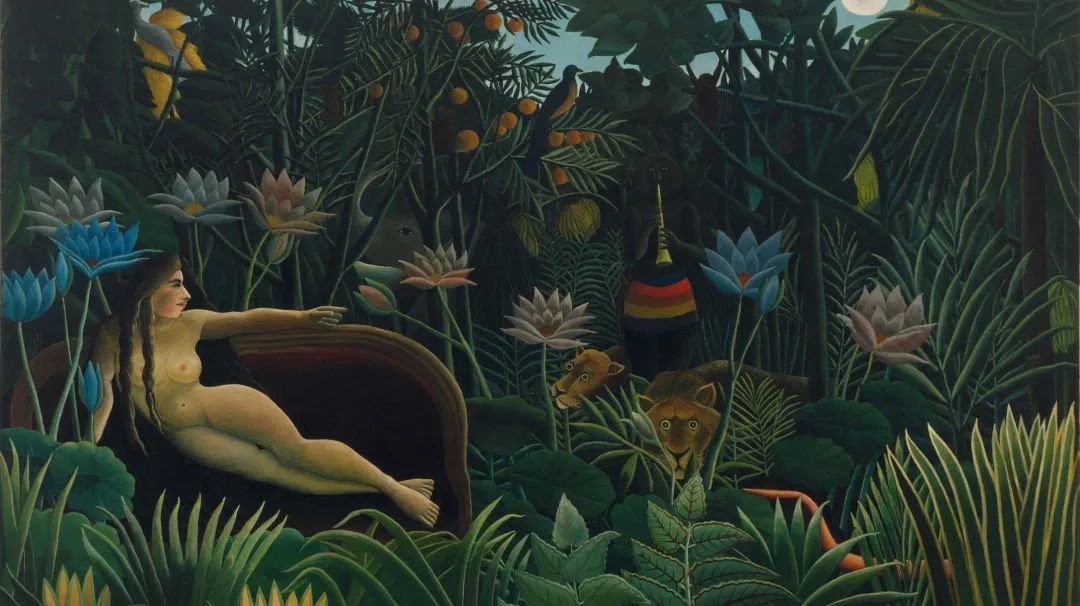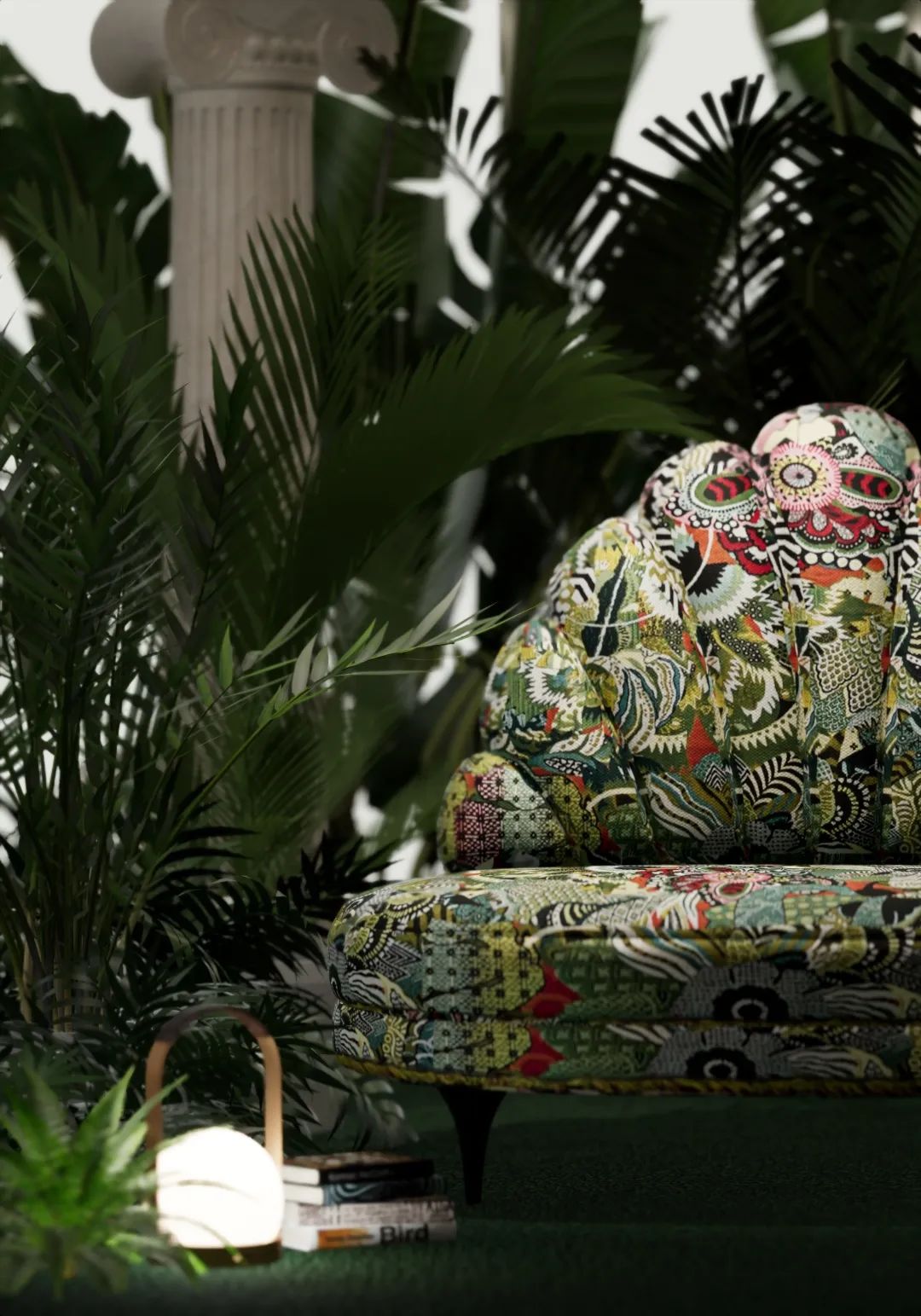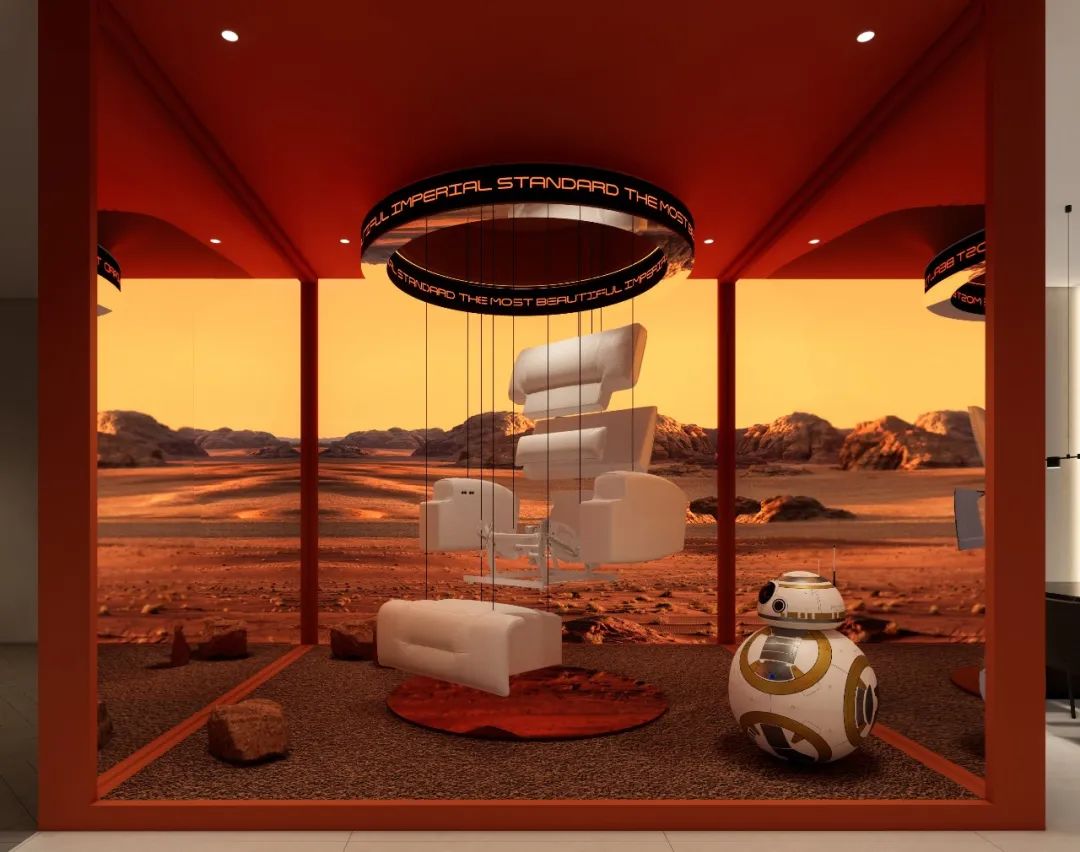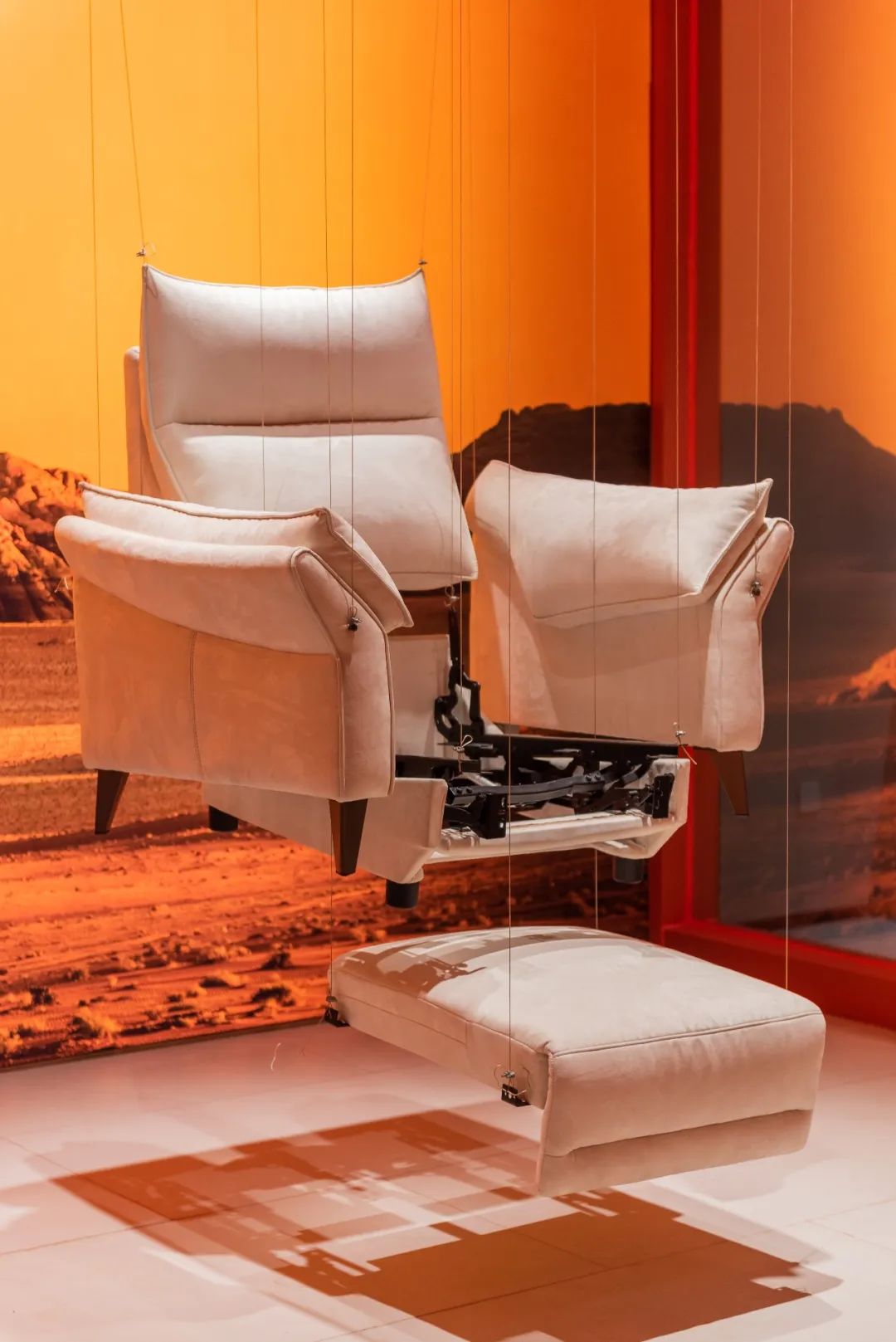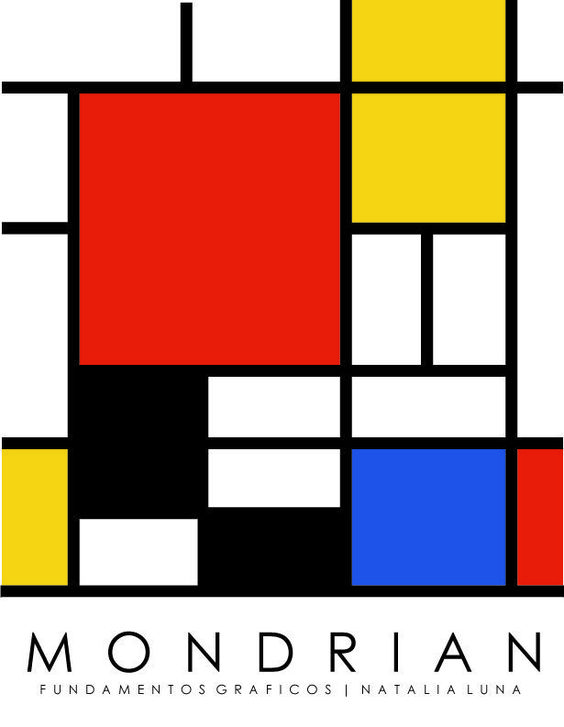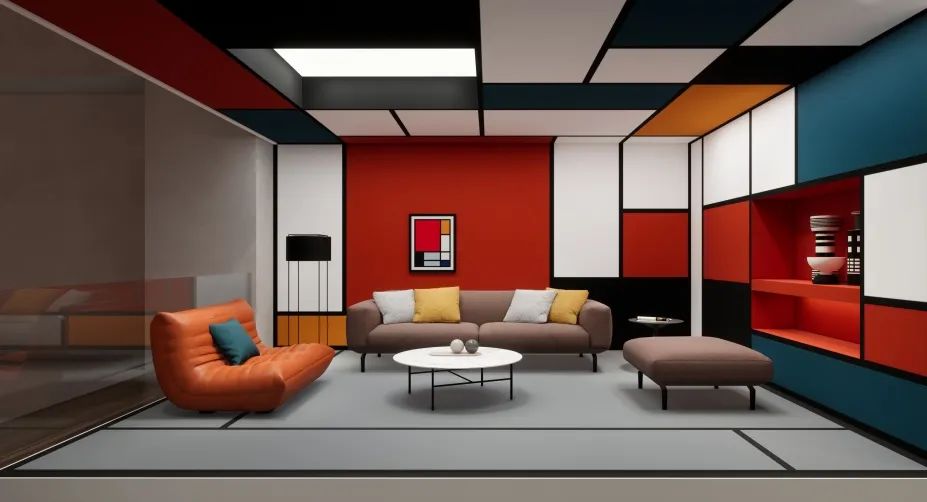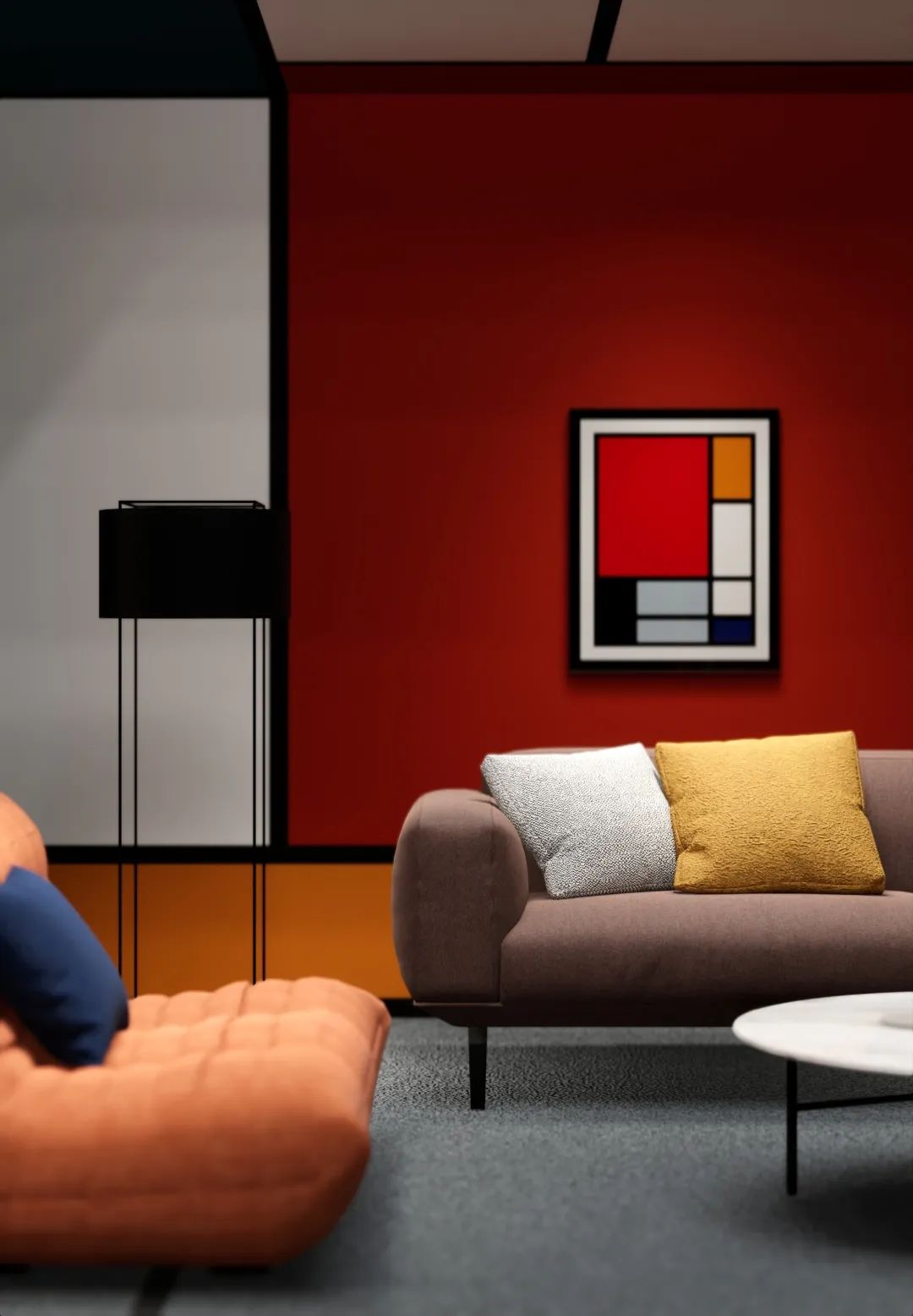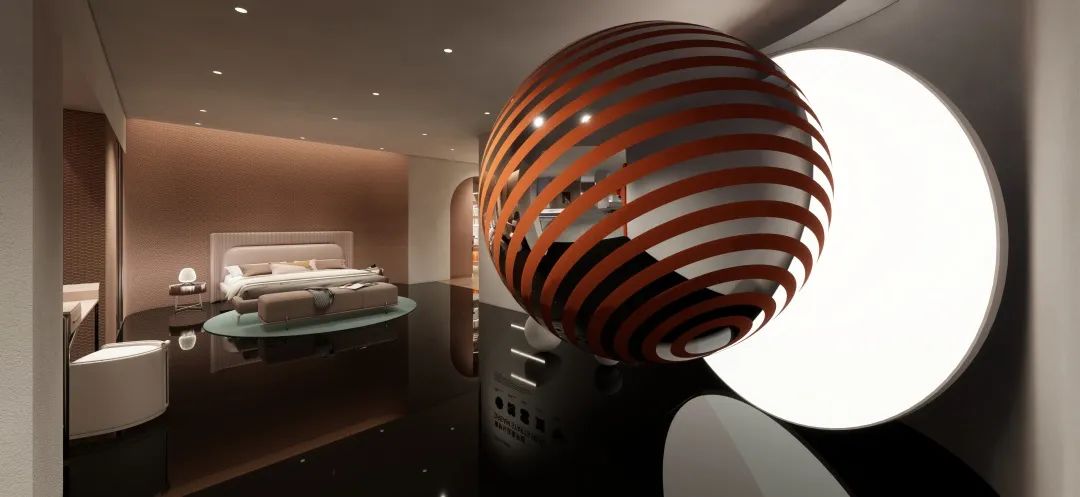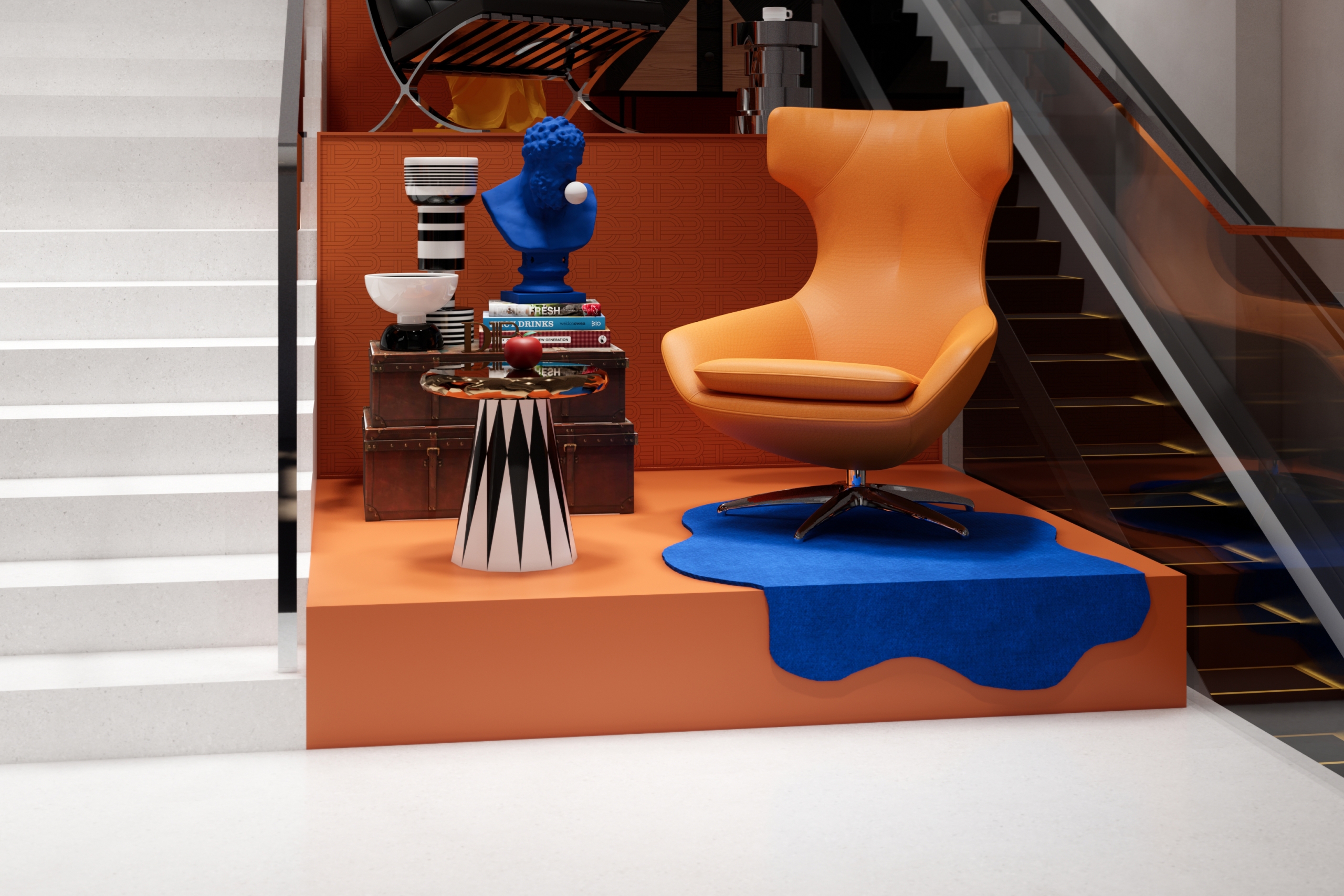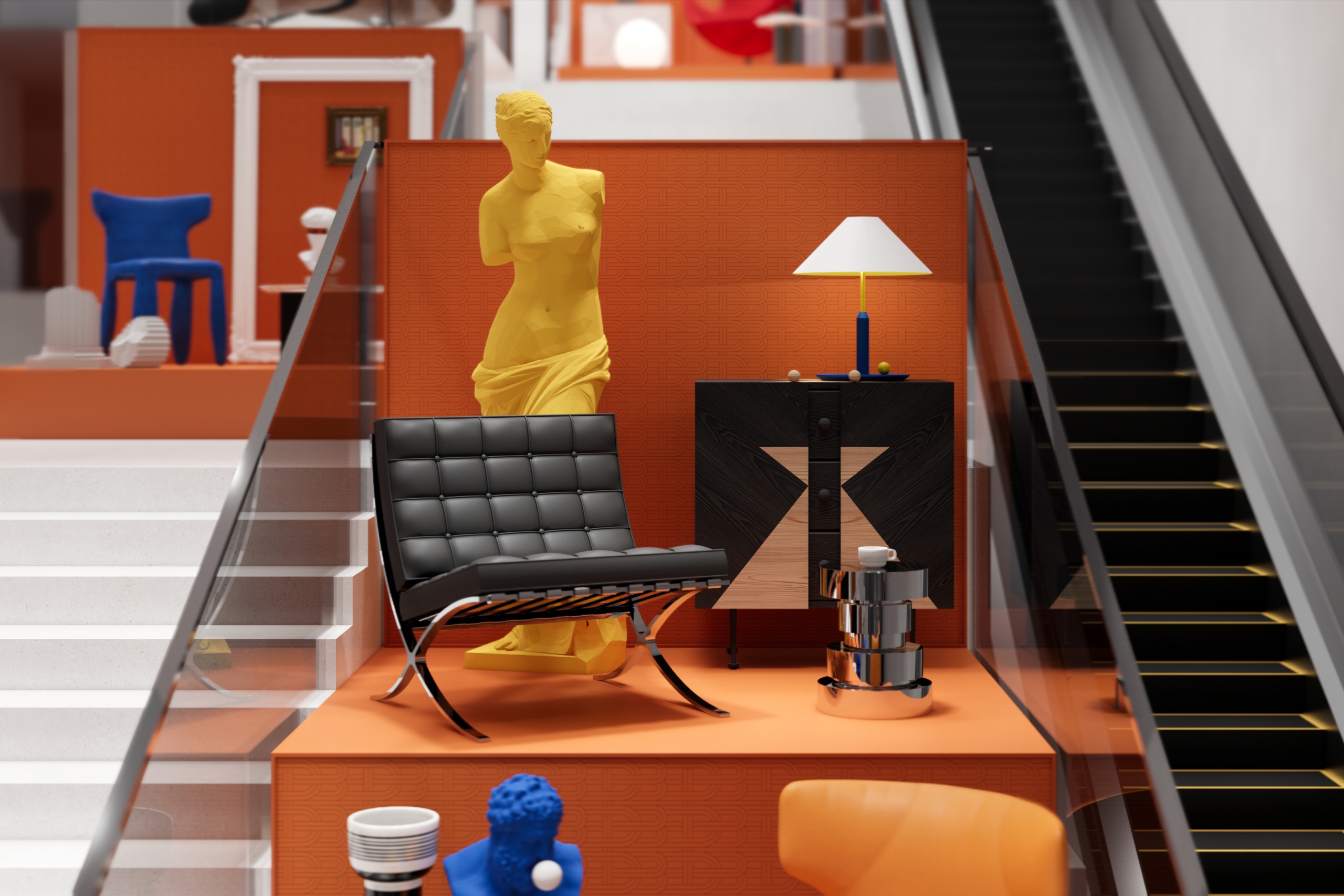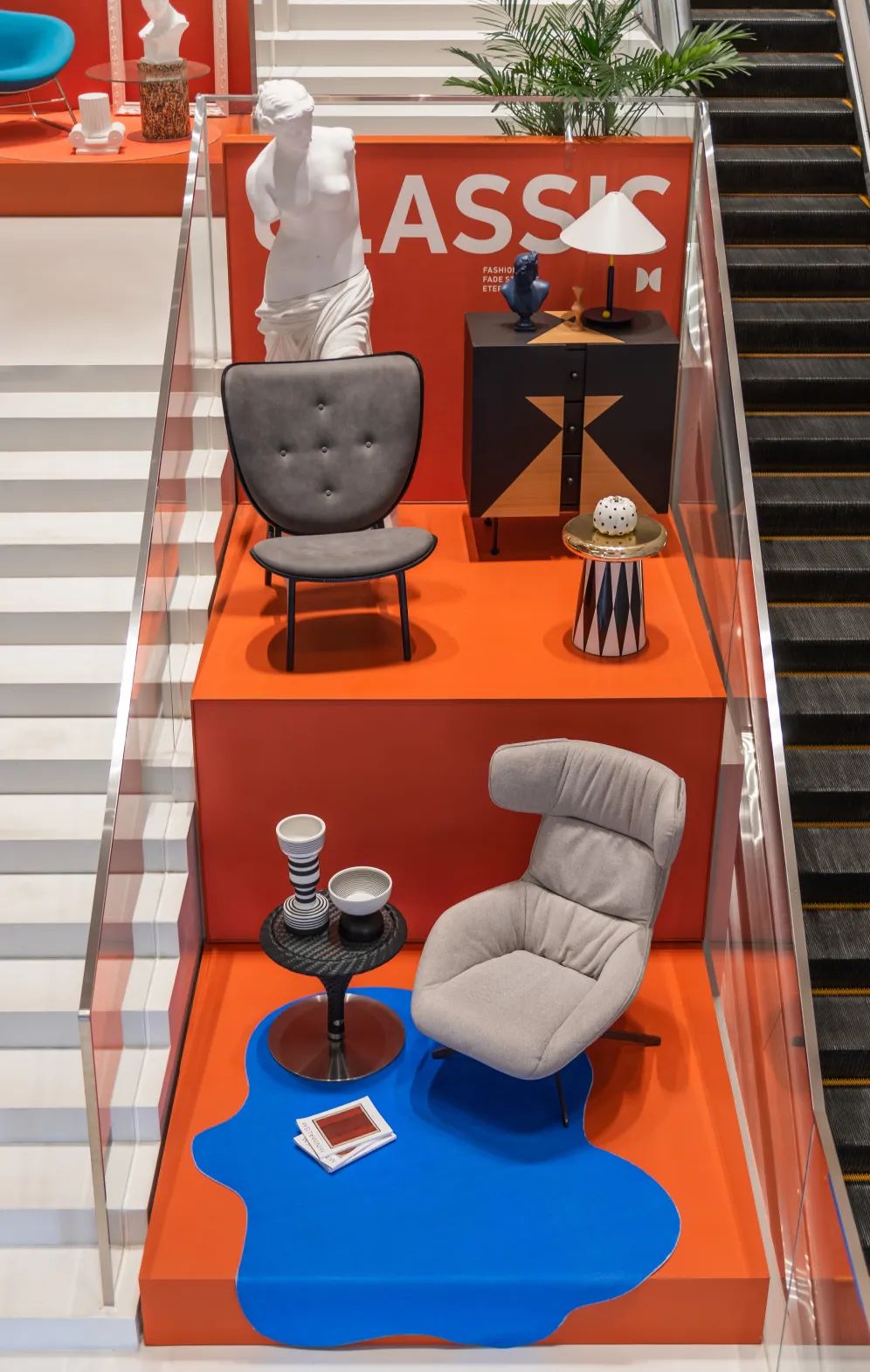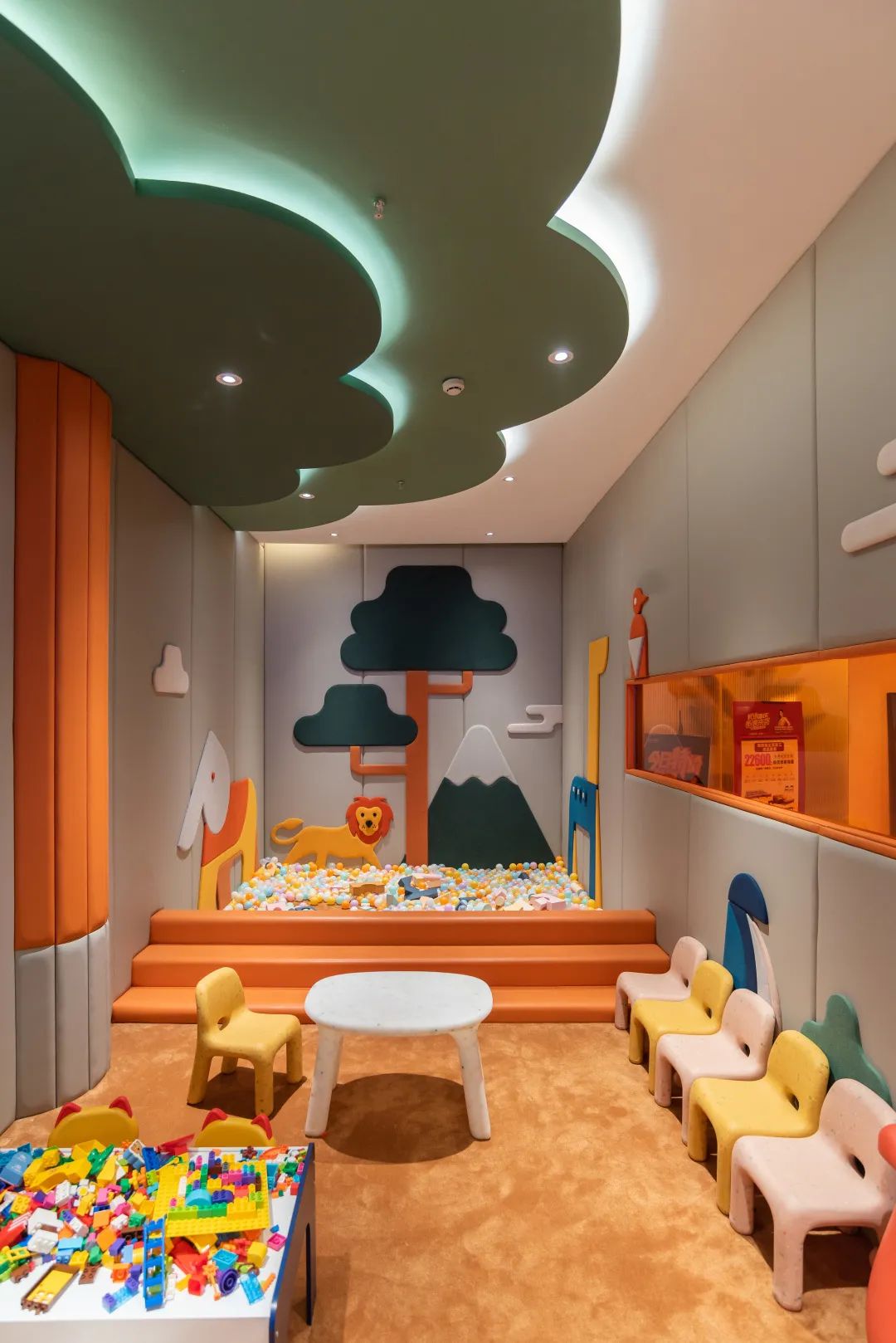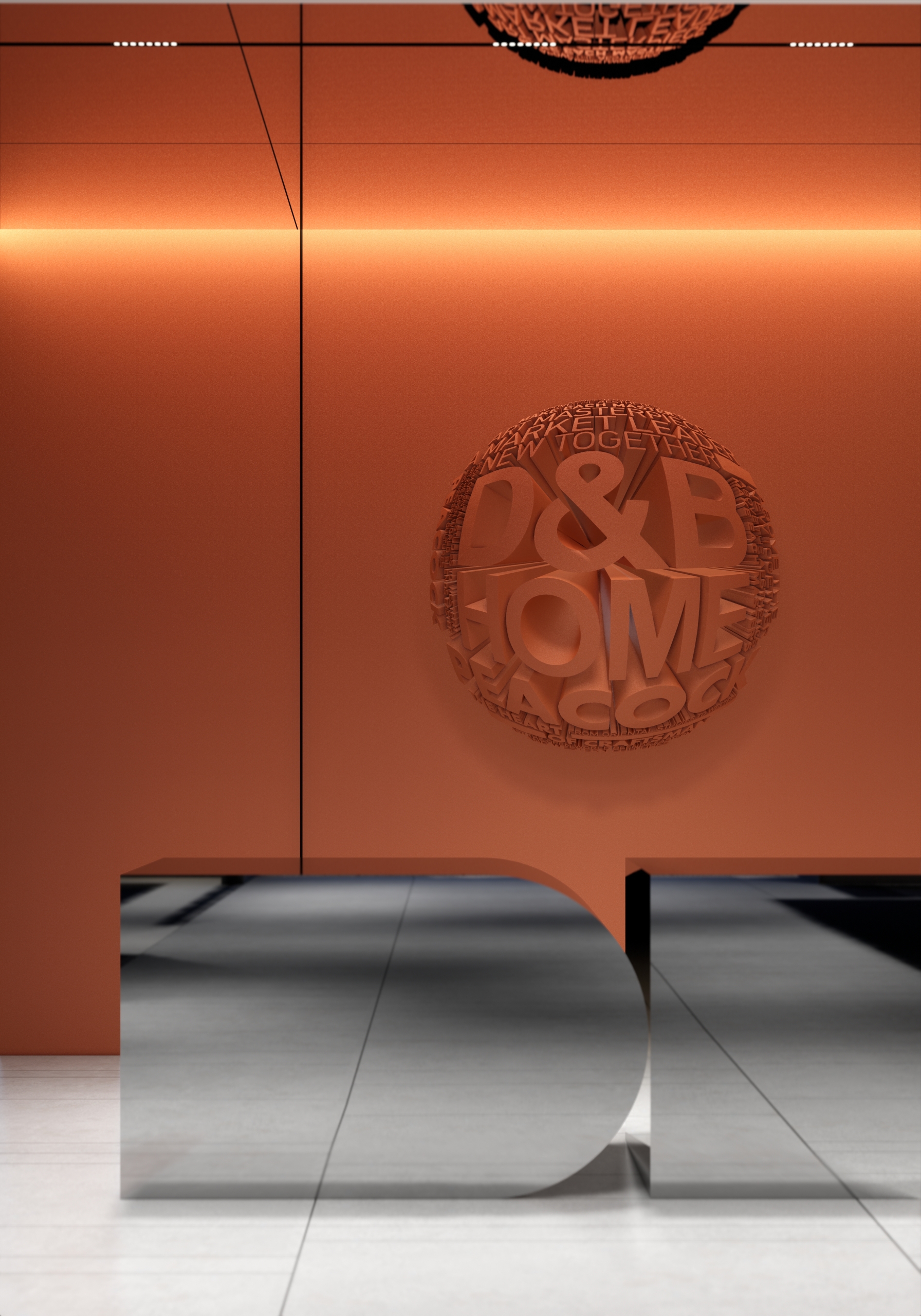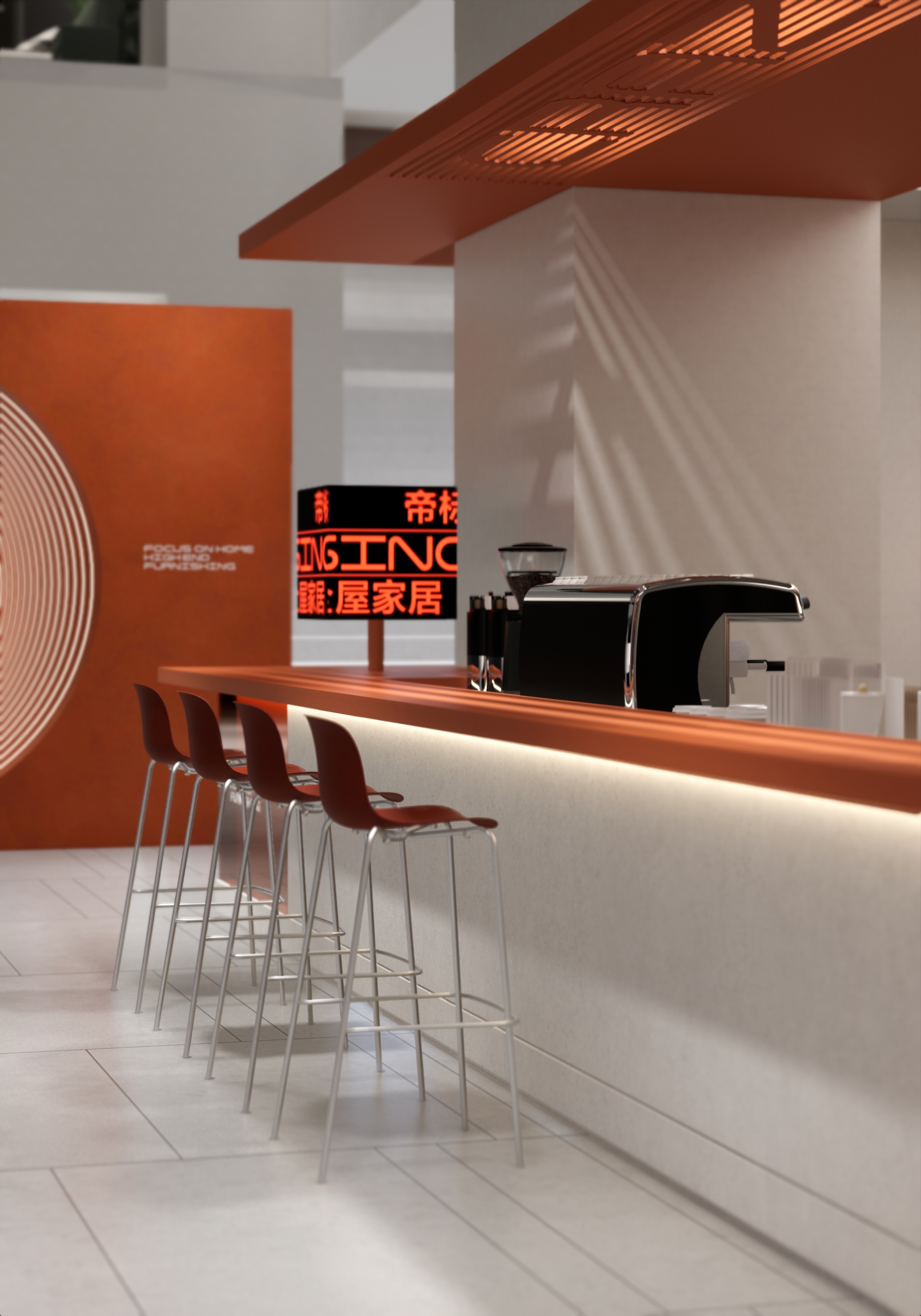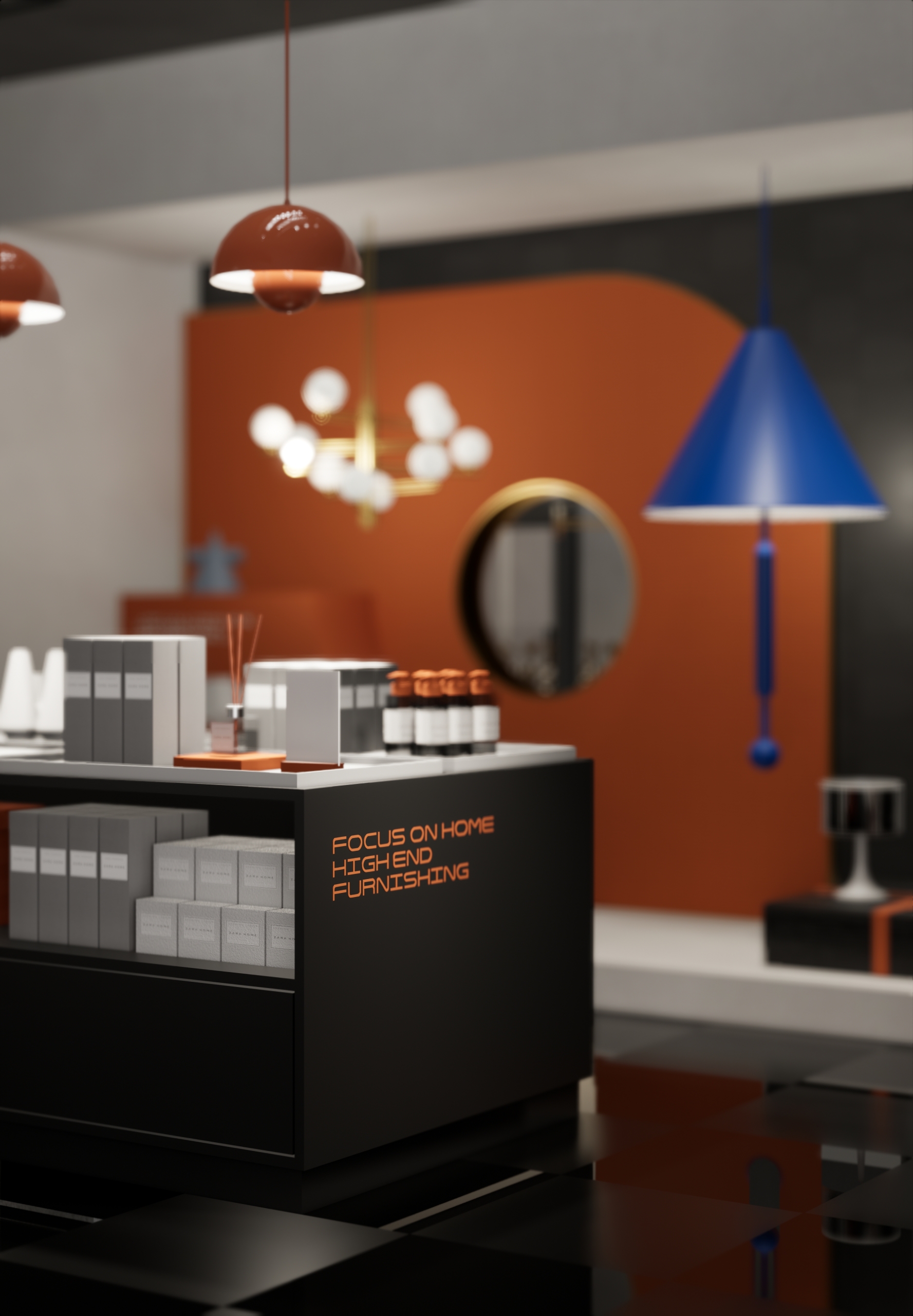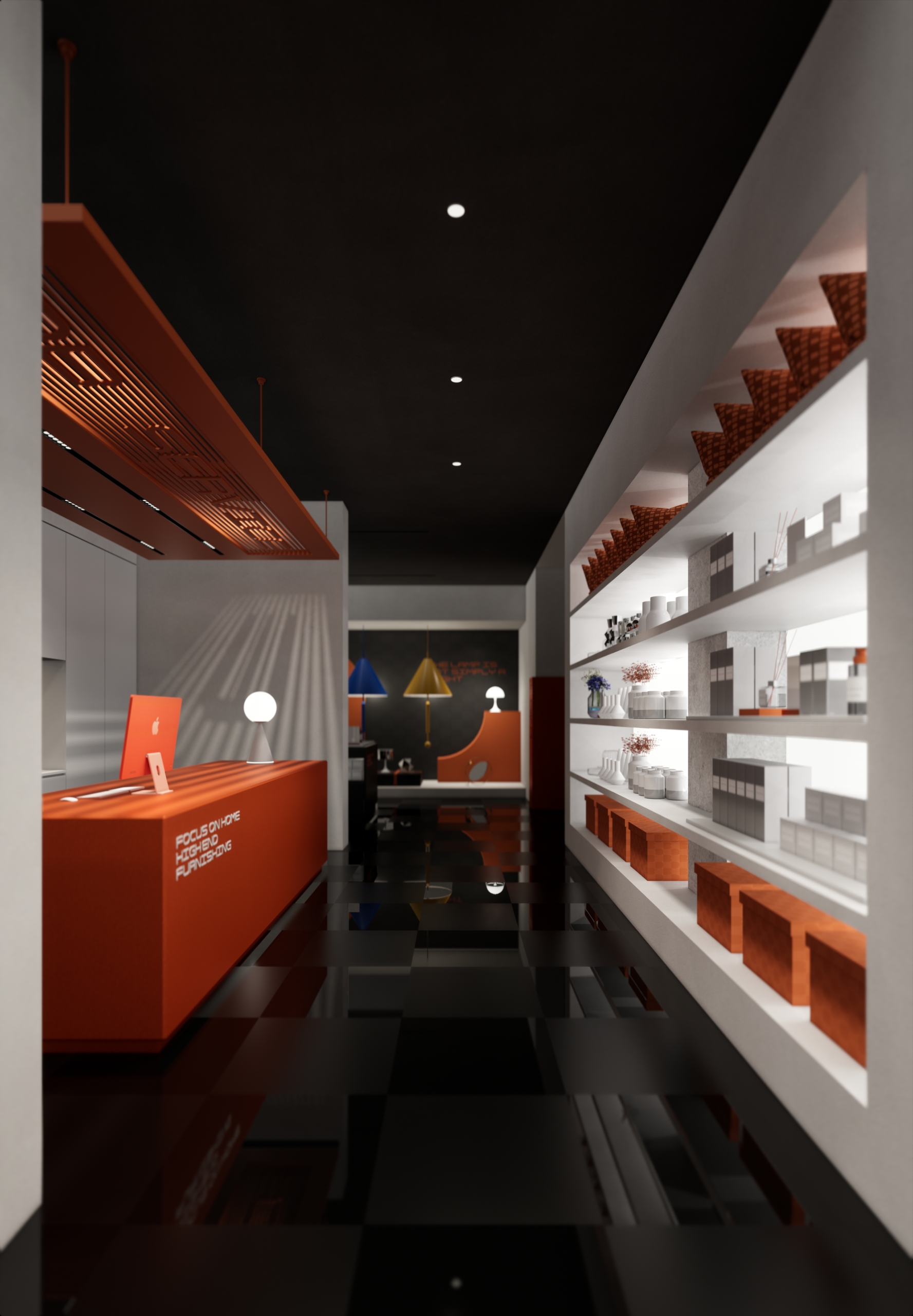D&B帝标家居总部展厅
从概念店、办公空间到家居体验店,持续为帝标的体验空间注入全新的概念范本与设计表达。
项目面积 | 8500㎡
项目地点 | 四川·成都
设计总监 | 廖虹森
空间设计 | 宋昊 / 石杨洋 / 周先治 / 吕莉
平面视觉 | 何季航 / 齐东周
施工后期 | 袁萍 / 何冰 / 杨正昱
过去三年,瑞升在与帝标合作的多次零售终端设计项目中,通过不断叠加“设计&创意”的品牌显性属性,为帝标刷新着传统家居商业空间的规则边界;从概念店、办公空间到家居体验店,持续为帝标的体验空间注入全新的概念范本与设计表达。
这一次,我们重新回到“一个帝标沙发诞生的地方”,为其设计位于成都市新都区的工厂总部展厅 —— 在这个有着三层体量的建筑空间内,我们让帝标原本的“生产&制造”属性重回商业空间,在工艺流程、设计定制、家居美学及潮流元素的多维度品牌价值间,找到一个内在与外延属性平衡的诠释方式。
Over the past three years, in multiple retail terminal design projects that Ruisheng has collaborated with Emperor Biao, it has continuously added the explicit brand attribute of “design&creativity” to refresh the boundaries of traditional home commercial space for Emperor Biao; From concept stores, office spaces to home experience stores, we continue to inject new concept templates and design expressions into the experiential space of the flagship.
This time, we return to “a place where the imperial sofa was born” and design the factory headquarters exhibition hall located in Xindu District of Chengdu for it. In this three storey building space, we let the original “production&manufacturing” attribute of imperial sofa return to the commercial space, and among the multi-dimensional brand values of process flow, design customization, home aesthetics and fashion elements, Find an interpretation that balances internal and external attributes.
view
INSPIRING WITH DESIGN
品牌与产品最本质内核的价值,有着持续新生的力量。在深度发力了帝标零售终端的潮流形象刷新后,我们从表象重回内里 —— 让工厂状态回归商业空间,为本次项目设计激活了新的思考源点与底层逻辑,让空间的呈现形态和体验触点,更加贴近帝标匠艺精神的内核。
而通过艺术/潮流/色彩/图形的显性要素叠加,又为空间注入突破性的表达手法。无论是空间中的产品场景,或者功能区域,都能感知到被精心雕琢的设计美感。“帝标美学”与“工厂属性”的碰撞,产生出1+1>2的结果,再一次为帝标探索出现代家居空间美学的新立意。
The most essential core value of a brand and product has a continuous and new strength. After deeply exerting our efforts to refresh the trendy image of the Imperial Retail Terminal, we have returned from the surface to the interior – returning the factory state to the commercial space, activating new sources of thinking and underlying logic for this project design, making the presentation form and experience touch points of the space closer to the core of the Imperial Craftsmanship spirit.
And by overlaying explicit elements of art/trends/colors/graphics, breakthrough expression techniques are injected into the space. Whether it is the product scene in the space or the functional area, the meticulously crafted design aesthetic can be felt. The collision between “imperial aesthetics” and “factory attributes” has produced a result of 1+1>2, once again exploring a new concept of modern home space aesthetics for imperial standards.
-300x102-1.png)
